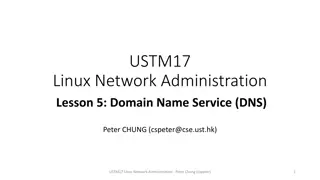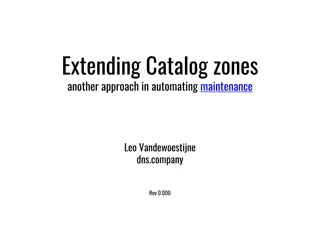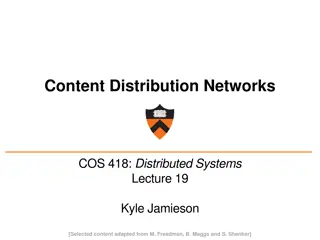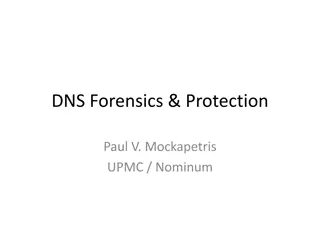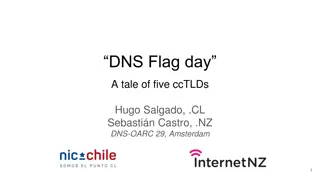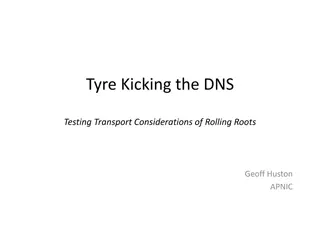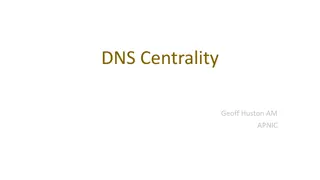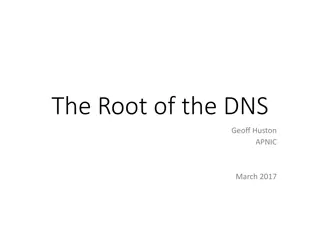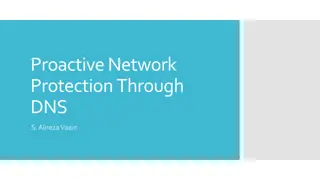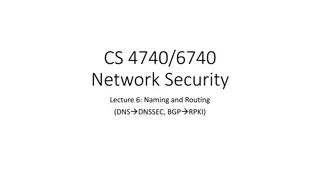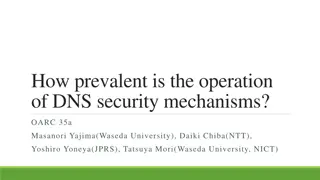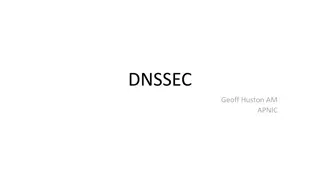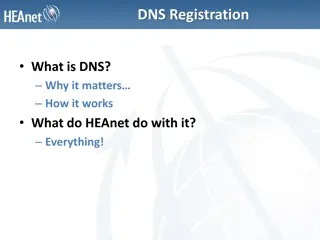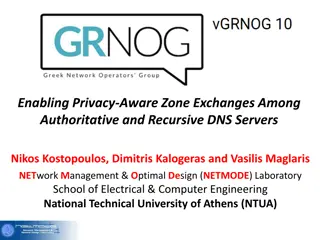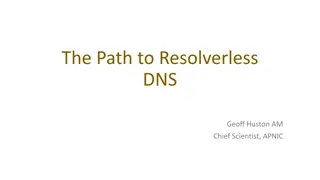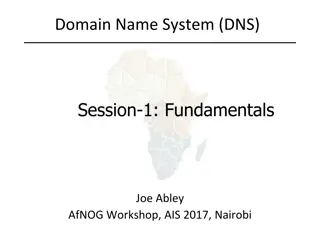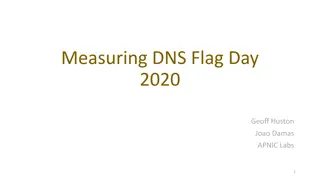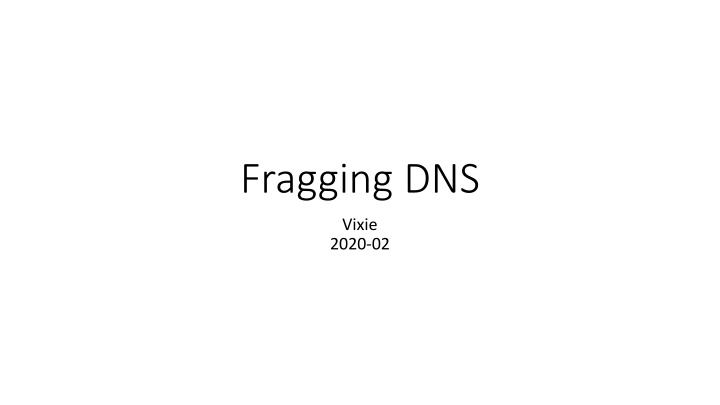
DNS Infrastructure Challenges and MTU Considerations
Explore the complexities surrounding DNS infrastructure security, IPv6 support, and the impacts of MTU settings on network performance. Discover insights shared by authority server operators regarding mitigating attacks, TCP vs. UDP usage, and the implications of payload sizes on data transmission efficiency.
Download Presentation

Please find below an Image/Link to download the presentation.
The content on the website is provided AS IS for your information and personal use only. It may not be sold, licensed, or shared on other websites without obtaining consent from the author. If you encounter any issues during the download, it is possible that the publisher has removed the file from their server.
You are allowed to download the files provided on this website for personal or commercial use, subject to the condition that they are used lawfully. All files are the property of their respective owners.
The content on the website is provided AS IS for your information and personal use only. It may not be sold, licensed, or shared on other websites without obtaining consent from the author.
E N D
Presentation Transcript
Fragging DNS Vixie 2020-02
draft-fujiwara-dnsop-avoid-fragmentation Comments and concerned from an authority server operator For IPv6, we support DNS queries over TCP and UDP; for IPv4, just UDP Attacks on the DNS infrastructure via IPv4 are frequent. Mitigation services requires limiting the attack surface TCP state on the server is expensive. Millions of QPS using UDP, even moving a fraction of that load to TCP would be disastrous. UDP frag has no sender state. Our IPv4 ranges are anycasted over multiple networks and datacenter locations. no guarantee that establishing a TCP connection is even possible flows often incoherent. DNSSEC works perfectly with the standard EDNS0 size setting of 4096. Your proposal breaks this working mechanism. We noticed this as a large access provider followed your suggestion, and reduced the EDNS0 bufsize. They have disabled that change for now to unbreak their DNS resolvers.
Tyranny of IEEE 802.3 MTU 106bps ethernet defined min 64 bytes, max 1500 bytes, IRG, trailers Same for 107, 108, 109, 4 109, 1010, 4 1010 Max PPS has grown to 103, 104, 105, 5 105, 106, 5 106 bps scales with density PPS scales with power, heat, complexity Eventually the MTU will have to increase Should have been ~216before now May be ~224in our lifetimes We should not be hardwiring payload sizes Look at the route MTU (LAN, MAN, WAN)
512 vs. 1232 TCP knows payload max size when assembling a segment IP + options, TCP + options, and far-end MSS, are all known Next data in the stream, and PSH signaling, are all known UDP senders do not know payload max size DNS client or server must estimate before sending Minimum MTU for IPv4 is 68, for IPv6 is 1280 Minimum reassembly capacity for IPv4 is 576, for IPv6 is NaN 68 = 60 + 8; 576 = 68 + 512 1280 40 8 = 1232 and smaller still if additional extension headers are used. (RFC 2460)
1232 vs. 1400 UDP with 1232-octet payload only works by accident IPv6 extensions aren t uncommon Each extension header is an integer multiple of 8 octets long If MTU 1280 was happening, UDP would often fail Because MTU is usually ~1500 or larger, UDP on IPv6 usually works 1232 assumed that PMTUD would be done, which doesn t work We should allow DNS UDP senders to check the route s MTU LAN route might be ~9K, default route will likely be 1500 We should admit that actual Internet MTU is ~1500 And we should leave some slop for tunnel and extension overhead Therefore ~1400 would be a perfectly safe DNS UDP max payload size


